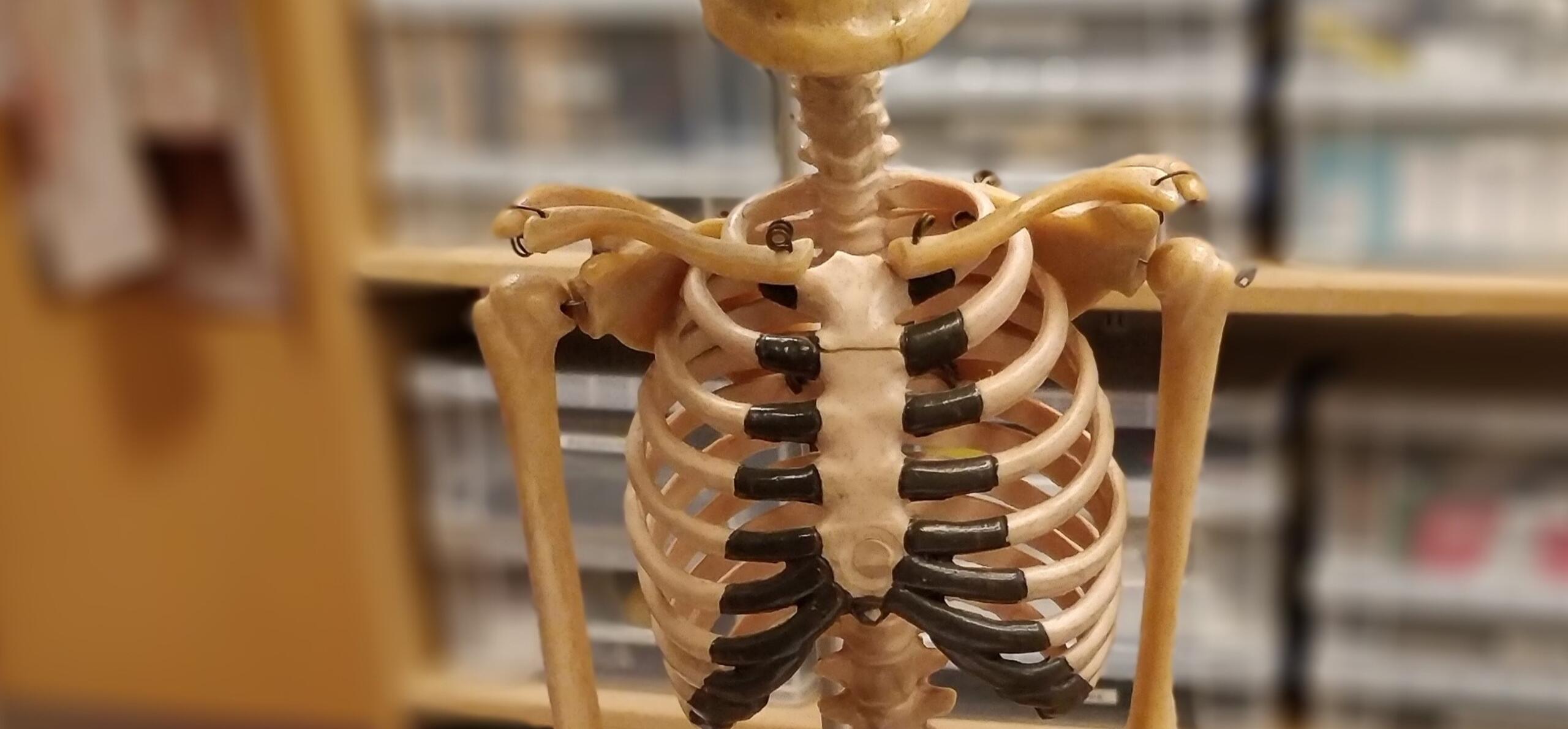They’re creepy and they’re kooky… it’s the Reading Museum loans collection!
Reading Museum has been loaning objects to schools since 1911. Our loans service has over 1000 boxes filled with objects relating to art, archaeology, zoology, social history… the list is never-ending! This Halloween, take a virtual tour round five of our kookiest and spookiest loans objects.
1. Victorian human hair bracelet
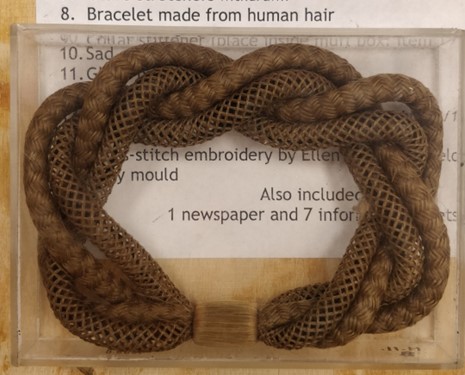
The human hair bracelet from our Victorian Home Life box (box H11)
Yes, you read that right: this bracelet is made of human hair! Although it looks like something straight out of a police evidence bag, this human hair bracelet is not the keepsake of a serial killer but is in fact a horrifically beautiful example of Victorian ‘mourning jewellery’ or ‘hairwork’. Mourning jewellery had been in fashion since the 1600s, but it wasn’t until Queen Victoria’s widowhood after the death Prince Albert in 1861 that it really took off. It acted as a memento mori (a reminder of the inevitability of death) and was often designed in onyx or jet. As an extra reminder of the lost loved one, the hair of the deceased could be incorporated into the pieces. Queen Victoria herself had several pieces of mourning jewellery.
The bracelet in our loans collection is part of one of our ‘Victorian Home Life’ boxes. It is carefully crafted entirely from human hair and would have been worn by a family member of the deceased. The work is extremely intricate and was probably made by a professional jeweller (although some women were known to have made their own). Although it may seem disturbing to us now, Victorian hair jewellery reflects an important historical mourning trend.
2. Edwardian doll
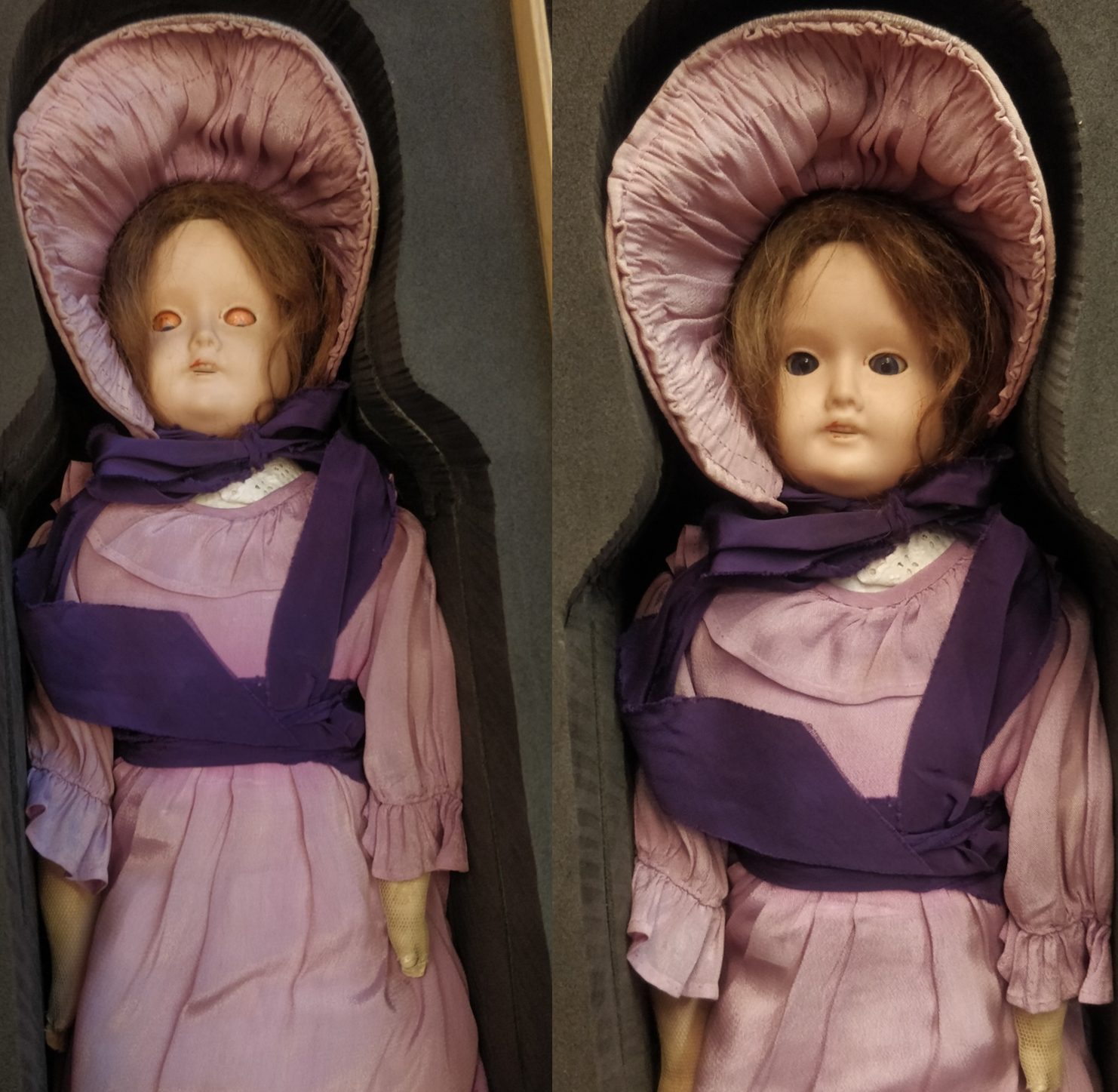
Edwardian doll (box H32)
Dolls have been playthings for millennia; the Egyptians made ‘paddle dolls’ thousands of years ago using beads for hair. Our Edwardian doll is beautifully dressed in sumptuous contemporary clothing and would have been a treasured and very expensive toy for a well-to-do child in the early 1900s.
The notion that dolls are creepy has a number of possible origins. The ‘uncanny valley’ theory, for example, suggests that dolls and other ‘humanoid’ objects are disturbing because they seem like they could come alive. This is perhaps the case with the Edwardian doll from our loans collection. When lying in its box, this doll seems pretty harmless. However, pick her up and you will be startled by the way her closed eyes roll open as if you have woken her from a hundred years of slumber. The realistic movement of this doll’s eyes are undeniably spooky! However, at the time this doll was played with, this would have been a remarkable feature.
The earliest dolls to have moving eyes were created in the late 1800s, so by the Edwardian period this was still a relatively new design idea. The function was known as a ‘sleep eye mechanism’ and was created using wires and weights. The popularity of these realistic moving eyes spread from Europe to America, with Ideal Toy Company releasing a doll with the sleep eye mechanism in 1914. Many modern baby dolls still retain this design feature, so although we might find her a little creepy when she jump-scares us in the museum storage room, the eyes on this doll do reflect an important evolution in historical toy design.
3. Spooky, scary skeletons
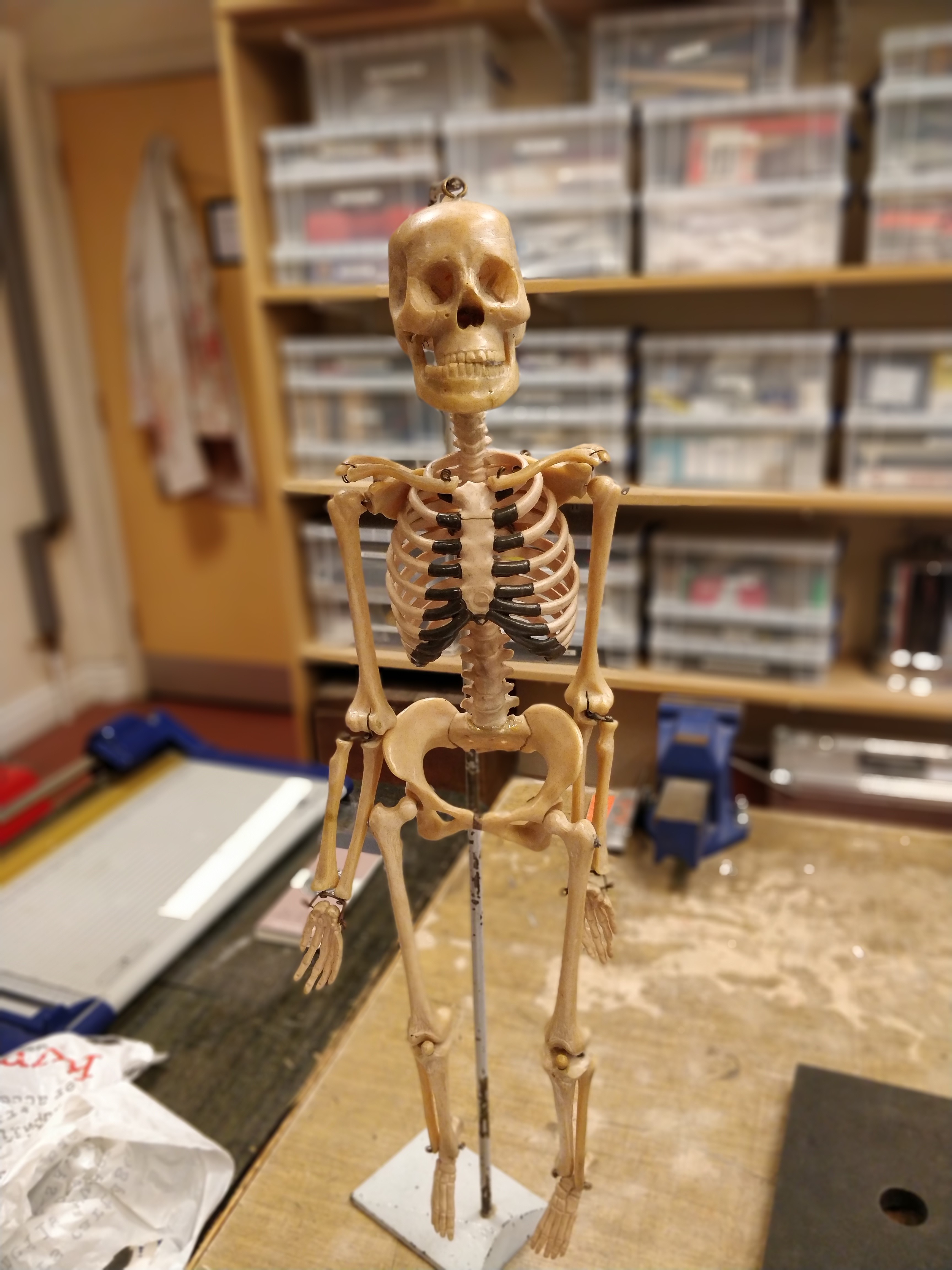
One of our anatomical skeleton models (box Z23)
We all have skeletons in our closets, and it turns out that our loans collection has quite a few! The human skeletons we loan out to schools aren’t real, but are accurate scale models which can be used to teach children about our anatomy. ‘Skeleton’ comes from the Greek word ‘skeletos’ (σκελετός), meaning ‘dried-up’ and was first used as an English term from the 16th century.
We’re so used to seeing skeletons appear around this time of year in the form of costumes, decorations, and advertising; the human bone structure has truly become part and parcel of the Halloween aesthetic. Children’s cartoons and music videos of skeletons dancing, such as the viral tune ‘Spooky Scary Skeletons’ which has been used in over 5 million TikTok videos since 2019, may seem like modern Halloween inventions, but we can potentially see them as descendants of the Middle Ages ‘Danse Macabre’. This popular allegorical art genre saw representations of the dead, usually depicted as skeletons, summoning the living to join them in a dance to the grave. The morbid images reflect the fragility of life and inevitability of death in a society characterised by low life expectancy and constant risk of mass disease outbreaks. Kings and popes alongside the common citizen in these works of art as a reminder that death comes to everyone, regardless of wealth or status.
Allegorical skeletons are not limited to western art; the beautiful Japanese netsuke from our collections pictured below also features musically inclined human remains. The tiny sculpture, which would have been used as a toggle on clothing or bags, shows a skeleton playing the shamisen for a monster called an oni and dates to the 19th Century. Like the European Danse Macabre, this toggle probably served as a reminder of the inevitability of death. However, as with the viral videos of dancing skeletons we encounter today, all these images were probably intended to be slightly humorous too!
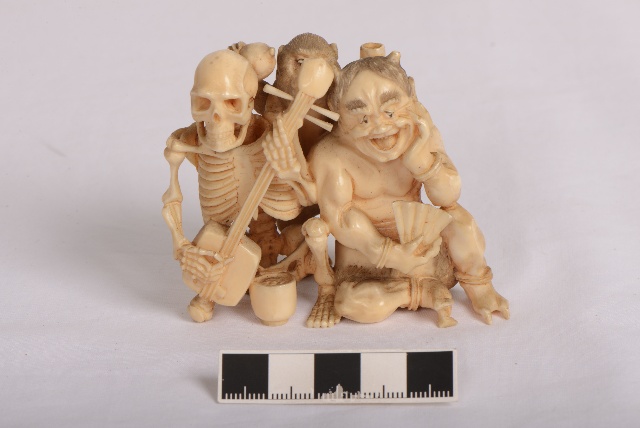
Japanese netsuke featuring a skeleton playing the shamisen for an oni and a monkey. Museum object number REDMG : 1926.99.16
4. World War Two baby gas mask
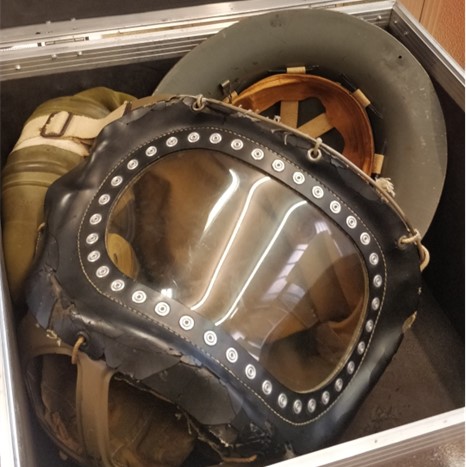
Second World War baby gas mask (box H97)
Anyone who flicked onto BBC 1 on 21st May 2005 will probably be forever haunted by the image and voice of ‘The Empty Child’, a gas mask toting infant encountered by Christopher Eccleston as he travelled back in time to Second World War London in Doctor Who. Although our loans collection doesn’t feature a gas mask of the kind this chilling child wears, one of our most popular loans boxes contains a baby gas mask.
The government began issuing gas masks in 1938, before the start of the Second World War. The baby gas mask was intended to be used by babies up until the age of 2. It resembles a large tank with a tube on the side which could be used to hand pump air into the chamber in which the child would be strapped. There is a glass window so that the child could see out (or so that a concerned parent could see in). The gas mask would originally have contained an asbestos filter to keep out noxious gases in the event of a poisonous bomb attack.
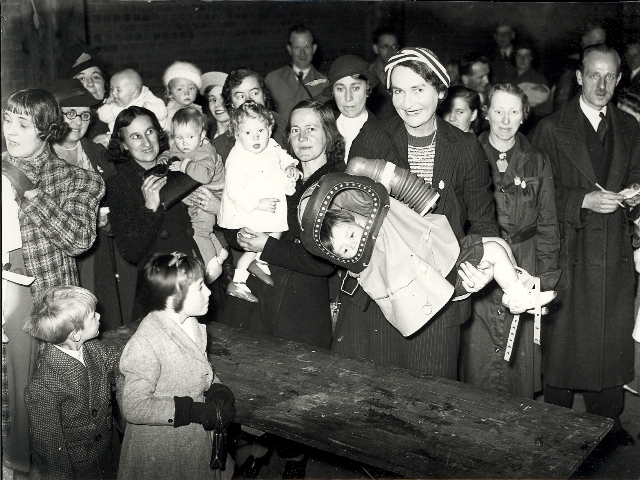
Demonstration of a baby gas mask published in the Berkshire Chronicle on 3 November 1939. Museum object number REDMG : 1980.36.A277.4
Parents were given instructions on how to use the masks. Although designed with safety in mind, gas masks do look like quite scary contraptions! Understanding this, the government often made children’s gas masks in bright colours, including the ‘Mickey Mouse’ gas mask, named after Walt Disney’s favourite critter.
Bonus object: if the gas mask isn’t quite Doctor Who enough for you, check out our 1960s talking Dalek from one of our 20th Century Toys boxes! EXTERMINATE!
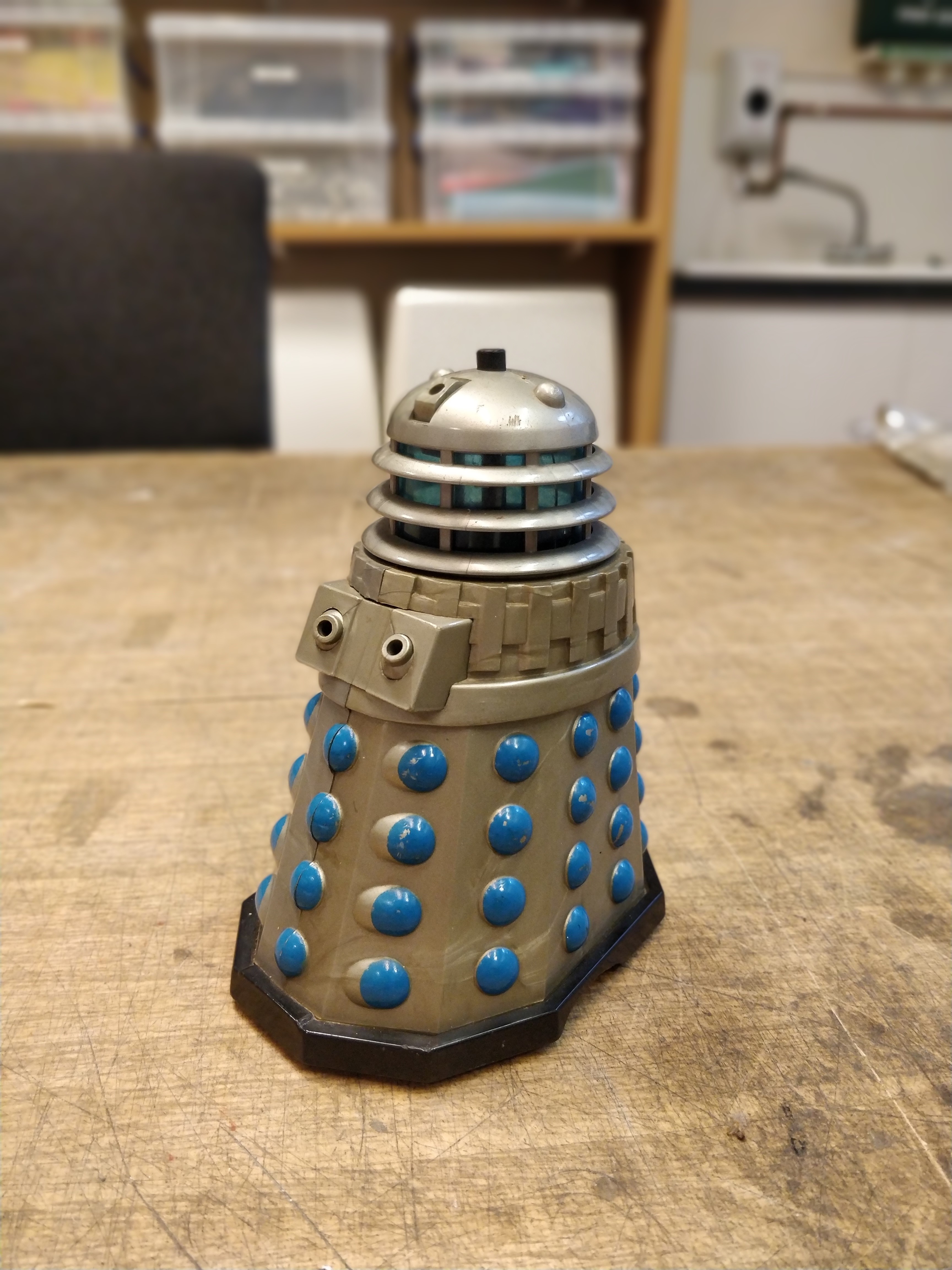
1970s talking dalek toy (box H308/A)
5. Twentieth Century ventriloquist dummy

Ventriloquist dummy (box H308)
Like the Edwardian doll, this Ventriloquist dummy looks like something straight out of a horror film. However, ventriloquist dummies were a highly popular form of entertainment for hundreds of years. Ventriloquism as a performance for audience enjoyment began in the 1700s, with performers ‘throwing’ their voices to make it appear as though it was coming from another part of the room. By the end of the 18th century, the performers had begun to incorporate dolls or puppets into their acts, leading to the popular use of the ventriloquist dummy. Fred Russell (1862-1957) was known as the Father of Modern Ventriloquism and had a permanent show in the Palace Theatre in London with his cheeky dummy ‘Coster Joe’. The popularity of ventriloquism at this time is evident in the OBE that Russell was awarded in 1948. These days, we are perhaps more accustomed to associating ventriloquism with horror films such as ‘Dead Silence’ (2007) or ‘Triloquist’ (2008). But what is it about ventriloquist dummies that lends themselves so well to the horror genre?
Perhaps the answer can be found in the ancient origins of ventriloquism. The word ‘ventriloquist’ comes from Latin, and literally means to speak from the stomach. Originally a religious practice, ventriloquists in Ancient Greece would interpret the sounds from their stomachs as voices of demons or the dead. In around 160 CE, a man named Alexander of Abonoteichus created a cult around a prophetic snake god named Glycon. The god itself was physically carried around by Alexander and delivered oracles. However, the writer Lucian claimed Glycon was essentially a hand puppet made of a snake’s body with a false human head, with the voice of Glycon himself providing the oracles! It could therefore be seen as a very early prototype for the ventriloquist dummy. The origins of ventriloquism as a method of clairvoyancy, paired with the creepy realism of the dolls themselves, is perhaps the subconscious trigger that led to their use in horror films today.
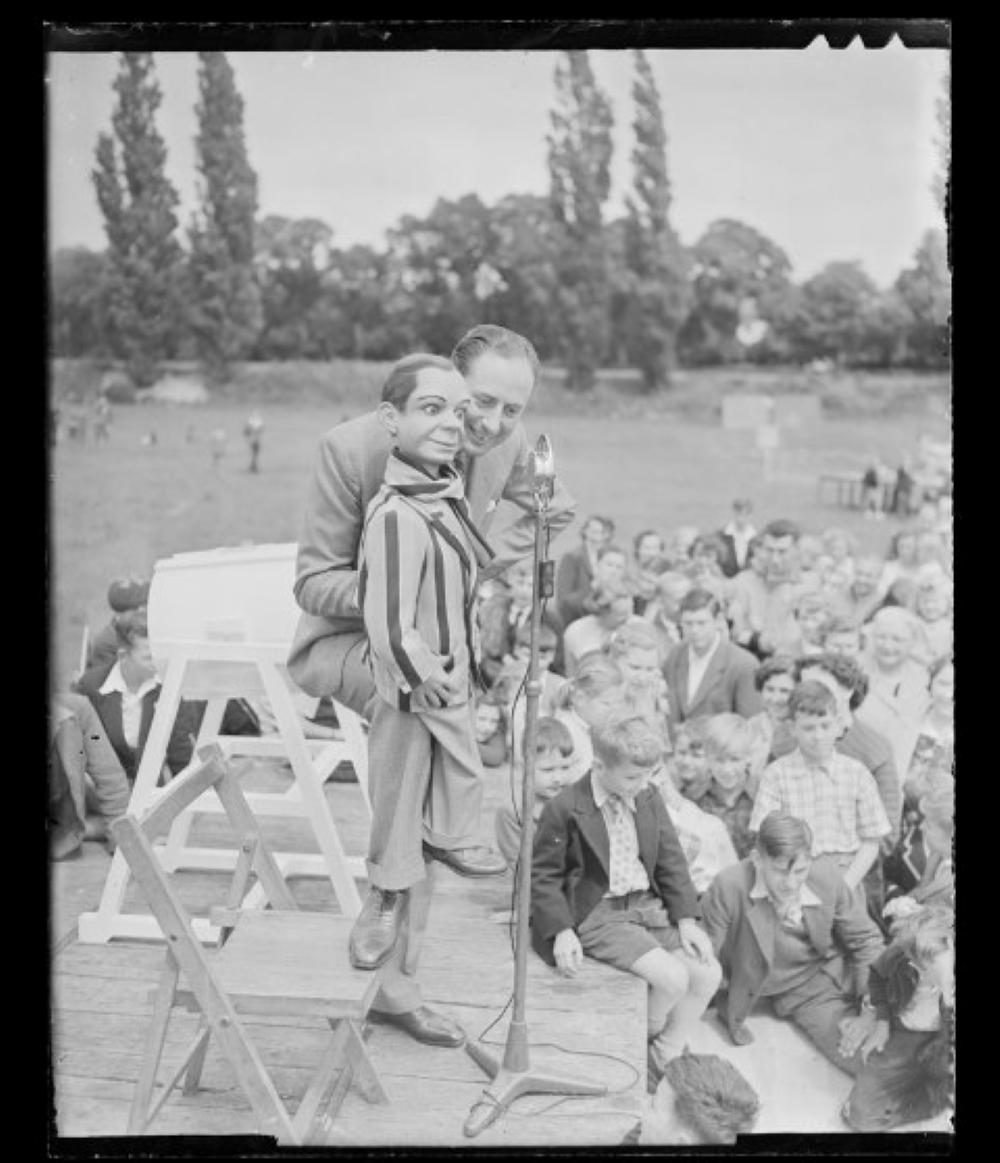
Photograph of a ventriloquist at the Royal Ordnance Factory fete (Southcote) taken for Berkshire Chronicle, 1970. Museum object number REDMG : 1980.36.C336.3
We hope you enjoyed this tour of our little shop of museum horrors- happy Halloween! If your school is interested in our loans collection – spooky or otherwise – don’t hesitate to get in touch with the education team to book one of our boxes!
